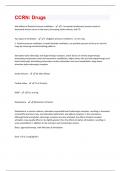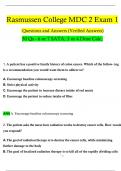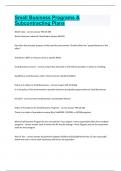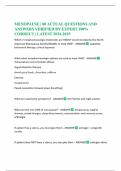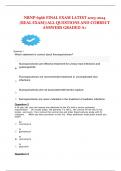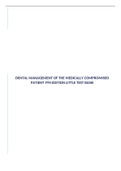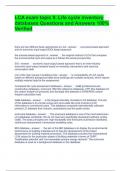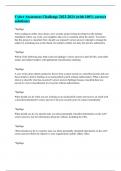Exam (elaborations)
CCRN: Drugs Questions and Answers well Explained Latest 2024/2025 Update 100% Correct.
- Course
- Institution
Side effects of Positive Pressure ventilation - 1. Increased intrathoracic pressure leads to decreased venous return to the heart, decreasing stroke volume, and CO Two types of ventilators - 1. Negative pressure ventilators- i.e iron lung 2. Positive pressure ventilators: hospital bedside ventil...
[Show more]
